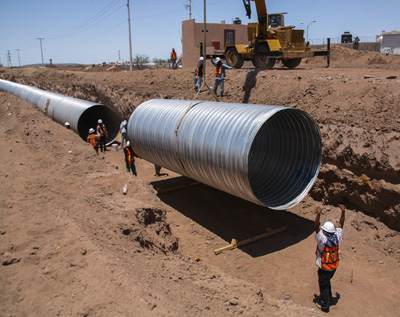
© Tomas Castelazo, www.tomascastelazo.com / Wikimedia Commons /
CC BY-SA 4.0
Regular telescope users may have noticed their daily data releases are coming a little earlier than in the past. Our data handling procedures have been updated to speed things up. Though the LT is designed to all be fully automated, to date we have deliberately inserted one manual break-point in the data flow such that after all the data are pipeline processed they are not released to you until one of us has had a look through all the night’s data as a quality assurance check. Experience has shown however that for the few occasions when this procedure has identified an instrument failure there are very many cases where we were unnecessarily delaying distribution of time sensitive data. Our new policy therefore is to release all data into the science archive as soon as possible each morning.
All science data are now typically available in both the Recent Data and searchable science archives between 09:30 and 10:30 UTC on the morning after they were observed. You will continue, as now, to get an email as soon as the data are available. Having removed the human interaction from the process, the data releases are now also being made seven days a week.
Those who use RISE at a high frame rate over several hours to generate large data sets may find their data arrive a little later than the estimate above. This is simply limited by the bandwidth from La Palma back to Liverpool. The data will be released as soon as the entire night’s observations have been transferred.
We are only here talking about the final science-ready archived data reductions. Quicklook continues to operate as before for those who need real-time, intra-night access to the data as soon as they are observed.
Besides better serving the time domain astrophysics community, there is one very obvious side effect to this change. We in the LT operations team will no longer see every frame taken and there is greater risk of telescope or instrument faults going un-noticed. The LT has a very wide array of in-house developed, automated telemetry processes that continually monitor system performance for us from hydraulic oil temperatures, through on-sky pointing residuals, instrument amplifier read noise and final archive image quality. These autonomous systems are effective at alerting us to many possible error states, but they will not detect everything. We are therefore now becoming much more dependent on you, the telescope users, to help run the observatory efficiently. We encourage all observers to routinely look at their new data and contact us about any problems you see. This is not only about technical faults. We have in the past been able to alert observers to mistakes in their phase 2 configurations that were revealed by poor data quality. Now the responsibility for ensuring that the data match expectations rests more heavily on all observers for their own data. We are always happy to advise on how best to exploit the telescope facilities if you get in touch to discuss your science objectives.


